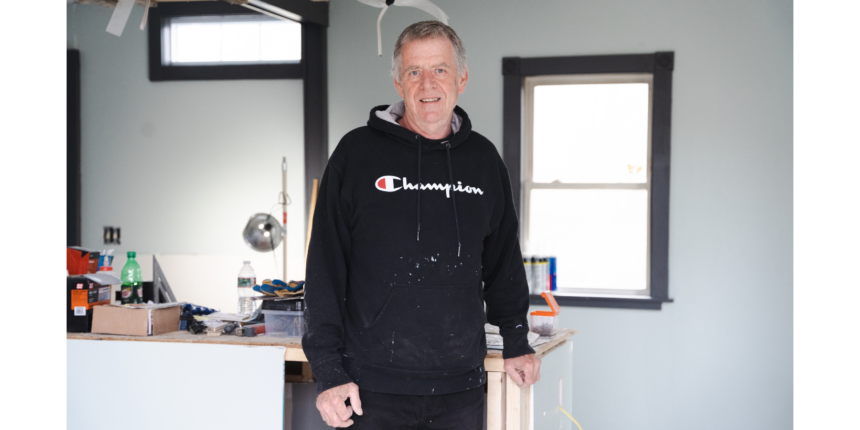Patient Profiles
da Vinci Surgical System Increases Safety and Shortens Patient’s Hospital Stay

John Keating’s life changed more than a decade ago after a routine physical by his primary care provider.
“Everything looked good,” said John, a 64-year-old resident of Wareham. The father of two is a former chef and restaurant manager who today rehabilitates properties and rents them as vacation stays.
He was having some blood work done as part of that routine visit and mentioned that he occasionally felt some minor pain in his neck.
His primary care physician sent him for a computed axial tomography (CAT or CT) scan at Tobey Hospital, a diagnostic tool that can spot abnormalities. While the scan did not indicate any suspicious tissue mass, it did show that he had enlarged lymph nodes and a spot on his left lung.
His doctor wanted to check the rest of his lymph nodes, which are located throughout the body, and he had a full-body scan at Tobey Hospital that revealed a number of issues: a 2.6-centimeter aneurism on his aorta and two sports hernias, but no obvious cancerous growths.
Because his physicians wanted to make sure that nothing was changing over time, John had CT scans every year or two just to be sure.
“All the Southcoast primary care providers have been great. They really stayed on top of things,” he says.
Early last year, a scan indicated that the spot on his left lung had changed shape and appeared to be in danger of spreading. His primary care provider, Dr. Thomas McCormack, referred him to Dr. Tammy Gleeson, a thoracic surgeon with an office at the Cancer Care Center in Fairhaven.
John, who has fought a cigarette habit for years, said Dr. Gleeson ordered a positron emission tomography (PET) scan, which uses a radioactive tracer to identify potential cancers and which identified a nodule in his left lung that could be cancerous.
Dr. Gleeson recommended a minimally invasive form of surgery at Charlton Memorial Hospital. She would use the da Vinci Surgical System, a robotic-assisted surgical tool that translates a surgeon’s hand movements on a computer console to manipulating tiny instruments that have greater range of motion than a human hand and enable the surgeon to be more precise and to do less cutting. Overall, it reduces risk and allows patients to recover more quickly.
Instead of having to make a major incision, Dr. Gleeson was able to insert the tiny tools through the small incision, bending and rotating the instruments while performing the procedure. The tiny wristed instruments move like a human hand, but with a greater range of motion. The Da Vinci system also delivers highly magnified, three-dimensional views of the surgical area.
During surgery, Dr. Gleeson sliced out a small piece of tissue that was biopsied immediately in the operating room. When the biopsy indicated that the tissue was cancerous, she was able to removed one lobe of John’s left lung through the small puncture, thanks to the da Vinci tool.
“She was very thorough,” John said.
He stayed in the hospital for a few days, with a drainage tube that would be removed some time later after he was released from the hospital. When John asked Dr. Gleeson whether he would be able to breathe normally after the surgery, she reassured him that he “should be able to resume a normal life.”
And he has.
Occasionally, he might get a little winded if he trots up several flights of stairs, but he is able to continue to work and take his regular walks with his wife Janet. And there are no big scars from his lung surgeries, just a small hole in his side, two other smaller indentations … and a total of only six stitches.
“I lucked out,” he says. “I’m very, very happy with the care I received.”
The cancer was removed at an early stage, and John has required no further treatment, although twice a year he is checked to be sure the cancer has not returned and the aortic aneurism has not grown.
“I know not all doctors are that thorough,” he says. But his Southcoast physicians have been. “They really look out for you.”
For more information on Southcoast Health’s robotic-assisted surgery technology, visit Robotic-Assisted Surgery Technology – Southcoast Health.
